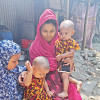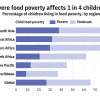It's not just poverty

You give dowry and I receive it, why are you bringing government into this?"said a woman in a village in Rangpur district during a discussion on women's status. I had the opportunity to facilitate the session, and have thought of this many times since hearing several years ago. The comment reminds me that it is extremely challenging to get rid of a harmful practice if it is socially accepted, even when it is prohibited legally. Law is important, but not enough to bring social change. Recently there have been several discussions about child marriage, since there were reports that the government might lower the minimum age of marriage for girls. Like many others, I strongly believe that the minimum age of marriage for girls must remain 18 years, and any move to change this is a serious violation of child rights. But today's article is not about this. I would like to reflect on why the rate of child marriage (64 percent) is so high in Bangladesh, even when we have the Child Marriage Restraint Act of 1929.
Child marriage is one the most significant reasons for girls dropping out of school, and marks the end of childhood for them. This increases the risk of domestic violence to the girl children. Due to physical and mental immaturity, married adolescents are sometimes unable to perform responsibilities according to the expectations of their in-laws. This makes them vulnerable to abuse. In extreme cases, there is divorce or separation. Married adolescents are also not able to participate in the decision making process of their family, and thus the patriarchal norms continue. Child marriage leads to early pregnancy, and adolescent girls are not properly prepared for parenthood. Adolescent mothers are more likely to suffer from birth related complications than adult women. Malnutrition is also very common for them.
All of us are aware that poverty, social insecurity of adolescent girls, lack of education and vocational skills development opportunities for girls, natural disasters, social acceptance and weak enforcement of law are some of the reasons contributing to child marriage. I want to emphasise on something that is usually missing in child marriage discourse. Gender inequality is one of the root causes of child marriage. The society places disproportionate emphasis on women's reproductive and caring roles, and they are often not viewed as individuals with the right to realise their full human potential. Thus, marriage becomes the most important and central event for a girl or woman (across all socio-economic groups), and parents consider it to be their major responsibility to ensure that their daughters are married off. So when they find a 'suitable' groom, they arrange marriage for their daughters, even when they are under-aged and/or have not completed their education. When a boy drops out of school, even poor parents take initiatives (for example, enrolling him in vocational training or giving him money to run a small business) so that he can be economically productive. But when a girl drops out of school, most parents will arrange their marriage. Parents believe that they need to ensure that their son gains the capacity to generate income, but they do not hold the same belief for their daughters. This does not only happen in poor families. Many parents from well-off backgrounds do not understand the importance of continuing education of girls or their full participation in the workforce. That is why they do not hesitate to arrange the marriage of their daughters in the middle of their university education.
In her novel Motichur published in 1904, Begum Rokeya wrote:
"We shall do whatever is needed to be equal to men. If we have to earn independently in order to gain independence then we should do that…Why shouldn't we earn? Don't we have hands, legs, and intellect? Can't we engage in business with the amount of energy that we spend in household work in the husband's place? [...] Why do we cry if our girls are not married off? Educate your daughters properly and let them enter the workplace; they can earn their own livelihood."
We have not been able to live up to the vision of the revolutionary Begum Rokeya in creating an environment where women's economic emancipation is valued and celebrated. More than a century ago, Begum Rokeya wrote that women are suitable for any profession, including being a judge, magistrate, barrister and even viceroy. Wouldn't she be upset to learn that even now parents 'cry' when they are unable to marry off their daughters? Marriage is critical for maintaining one's family and social life, but that is relevant for both men and women. Why should only women's lives revolve around marriage? Why do they have to 'sacrifice' their academic and professional ambitions to maintain a family life? Don't most of them face gender stereotypes in choosing a career? We shall not be able to address child marriage until we truly confront these issues.
Child marriage is one form of sexual violence and is a major challenge of our time. So what should be done to prevent this? Integrated programmes, instead of disjointed projects, addressing the structural causes should be implemented to address child marriage in a holistic way. The enforcement of legal processes, proper birth and marriage registration, strengthening social safety net programmes to increase parents' income, improving girls' safety in communities, including through national and community-based child protection systems are needed to address child marriage. Men and boys should be involved as key agents to prevent child marriage. But most importantly, parents should be educated on the rights of girls to education, health and protection. Their capacity should also be developed in treating boys and girls equally. There must be attitudinal changes in the ways parents and the community, in general, view girls and women. A social movement is required to achieve true gender equality. There must be full economic, political and social empowerment of women; we must learn to celebrate their achievements beyond their roles as wives and mothers.
Let us have the same aspirations for our boys and girls. Let us raise our girls in a way that they become confident about themselves, and can realise their dreams to the fullest.
The writer is Director of Child Protection, Save the Children.

 For all latest news, follow The Daily Star's Google News channel.
For all latest news, follow The Daily Star's Google News channel. 








Comments